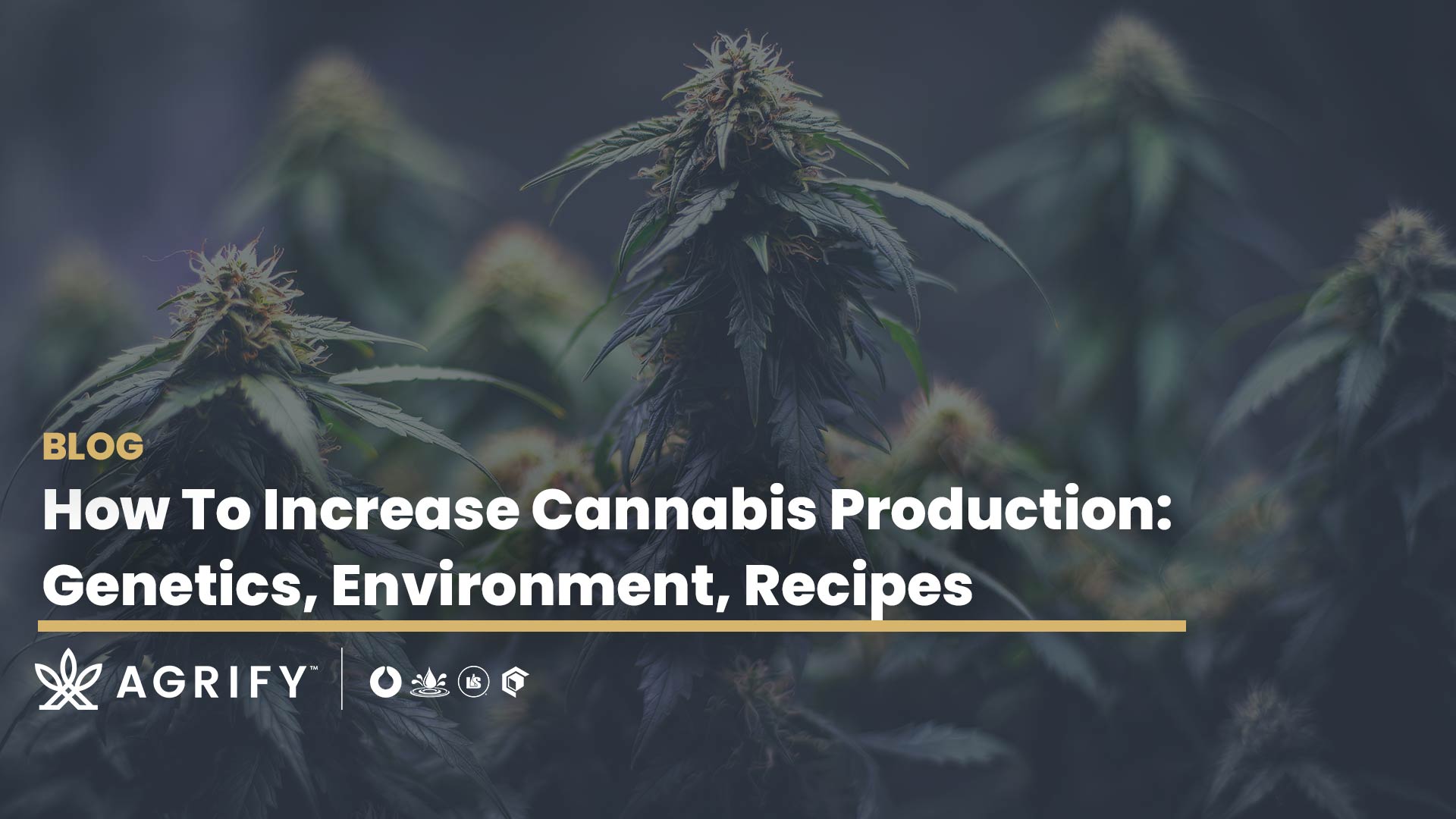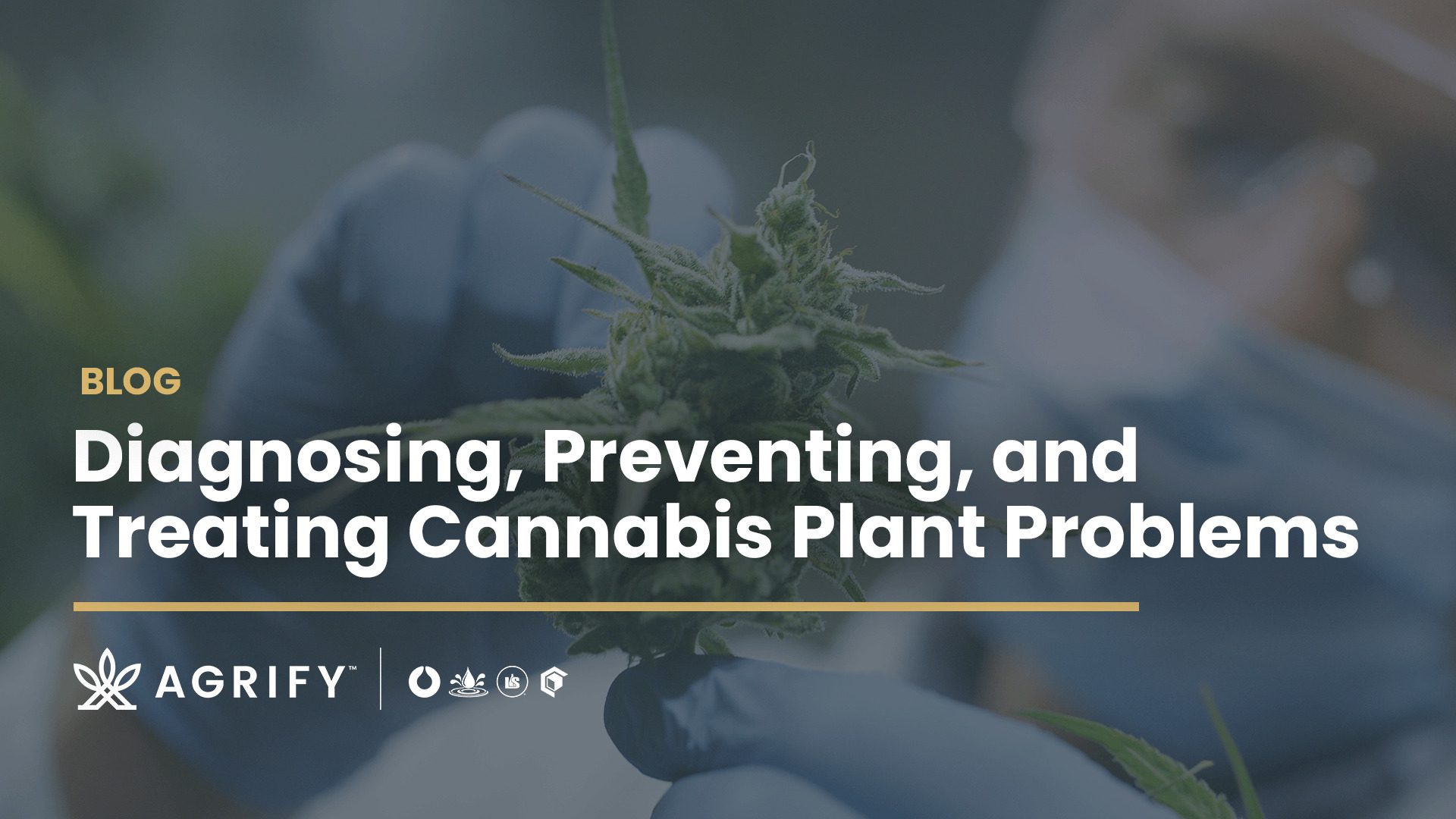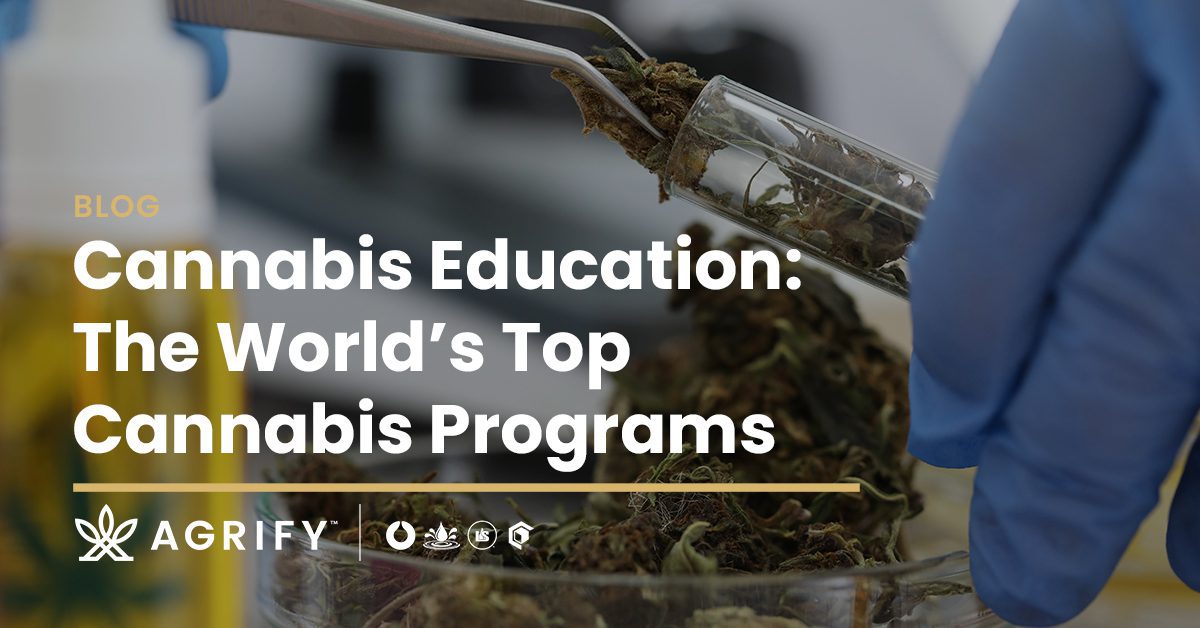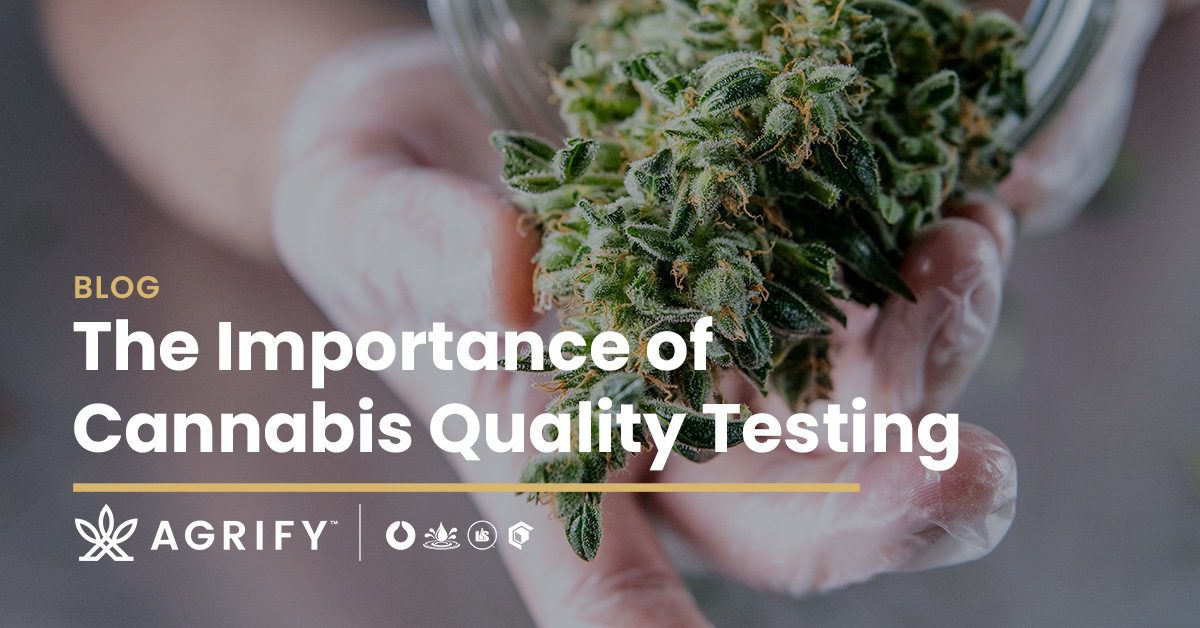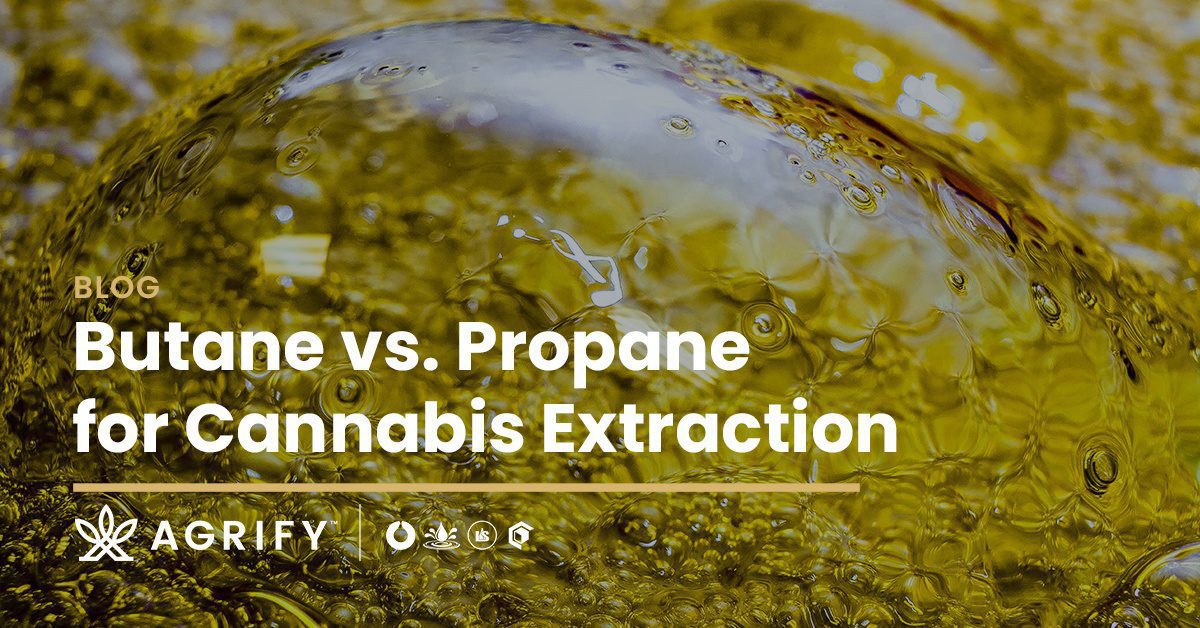What is Cannabis Crop Protection?
Cannabis crop protection describes techniques and technologies used to safeguard plants from disease and pests. All growers rely on crop protection, albeit to varying degrees. For example, the at-home grower may rely on simple canopy monitoring, while the commercial cultivator will likely roll out an entire facility of equipment and protocols.
Cannabis safety relies on effective crop protection. In an industry heading toward a federally regulated future, cultivators of all sizes need to get serious about it. Preventing disease and pests from taking out entire grow rooms doesn’t just protect the plants and the people involved, it also protects the bottom line.

Cannabis Crop Failure Impacts Plants, People, and the Bottom Line
Zamir K Punja, author of “Emerging diseases of Cannabis sativa and sustainable management,” summarized the issue succinctly: “The greatest challenge facing cannabis and hemp producers is the management of insect pests and pathogens that attack the roots, leaves and inflorescences.”
All regulated markets have implemented some degree of mandatory testing for molds, bacteria, fungi, yeasts, and other biological contaminants. And while the testing limits can vary significantly from one market to another, diseases and pests are constant and common concerns for all commercial cultivators.
A recent assessment of the failure rate in California reported a roughly four percent failure in 2019. While four percent isn’t an extreme number, California produced 17.3 million pounds that year, meaning close to 700,000 pounds were unsuitable for sale. This is just one example of how big the crop protection challenge is–even within mature markets, where cultivators should have some experience navigating it.
Commercial Cannabis Crop Protection in Practice
The entire industry, from outdoor operations to greenhouses and indoor facilities, is learning that minimizing contaminants and pests is a challenge– and one that must be met. This is where crop protection comes in. It’s a broad term encompassing all equipment, technologies, grow room SOPs, and facility protocols that tackle cannabis pests and disease. For indoor growers in particular, there are three tactics that lower the risk: integrated pest management practices, air purification systems, and grow room sanitation.

Integrated Pest Management (IPM)
“Integrated Pest Management (IPM) is a sustainable, science-based, decision-making process that combines biological, cultural, physical and chemical tools to identify, manage and reduce risk from pests and pest management tools and strategies in a way that minimizes overall economic, health and environmental risks.“
In cannabis, IPM is already a well-established practice combining a myriad of safe pest control actions with the most up-to-date information on pest life cycles and behavior.
It all begins with preventative measures, which means monitoring and setting of specific thresholds. If and when pest infestations go beyond preset thresholds, steps are taken in a progressive manner from least aggressive to most, including cultural, biological, and chemical controls. Chemical controls, aka pesticides, are only used as a last resort.
One of the most straightforward steps a facility can take is to promote the preventative steps, a critical one being routine crop monitoring. With the traditional grow room packed with corner-to-corner plants, it can be difficult (if not impossible) for staff to effectively monitor the canopy for signs of pests. Recalibrating the cultivation facility design to put all plants within easy reach is a simple solution, but a highly effective one.
Air Purification in the Grow Room
Disease spread within an indoor grow space can be rapid and devastating. Spores released from molds like Botrytis cinerea (bud rot) and Golovinomyces spp (powdery mildew) explode from the source at 80 feet per second. Most spores are microscopic in size and their spread is often undetectable as it travels from room to room on employees, tools, and even the plants themselves.
Beyond strict SOPs on grow room and employee sanitation, air purification systems are the single most effective means of combating the spread of these near-invisible pathogens. Air filtration products range from basic charcoal filters to ozone generators to UV light filters. Bluezone, a U.S. military-developed air purification system offered by Agrify, is one such advanced crop protection technology.
Bluezone effectively destroys pathogens with ultraviolet-enhanced oxidation. The system safely protects plants and the environment by removing harmful pathogens, with a proven 99.9 percent kill rate of bacteria and mold.

Grow Room Sanitation
By now, grow room cleanliness and sanitation are built right into the foundation of any commercial facility. These procedures typically cover the movement of people, plants, and equipment between spaces as well as sterilization for the space itself between crop cycles.
Many sanitation and sterilization techniques may seem overly simple, but their simplicity doesn’t negate their effectiveness. For example, the regular sterilization of irrigation lines, personal protective equipment, and an end-of-day grow room clean-up are all core tenets of effective grow room sanitation.
There are, of course, ways to improve upon this foundation with clever facility designs that support these activities, the use of equipment that is easy to maintain and clean, and products that boost the effectiveness of daily sanitation tasks.
Agrify has partnered with Enozo in support of the latter. Enozo transforms basic H2O into aqueous ozone, one of the planet’s most powerful oxidizers. This system kills 99 percent of bacteria and germs and sanitizes surfaces in 30 seconds flat. Growers love it because it’s a proven alternative to harsh chemicals and safe to use around plants and people.

Cannabis Safety Comes from Common Sense and Crop Protections
Reducing the risk of pests and pathogens on your plants, people, and facility isn’t rocket science. Many of the fundamentals of cannabis crop protection boil down to common sense processes like routine surface cleaning and changing PPE when traveling from one room to the next. But the regulations around minimal thresholds for some of these contaminants mean that the commercial industry needs to take several steps further in the common sense department.
Crop protection has to be built right into cannabis facility design. Operators in today’s highly competitive market require crop protections from proven equipment, technology, and products to deliver more effective results. That means building a grow room that facilitates canopy monitoring, installing Bluezone air filters, and deploying Enozo surface sanitation.
